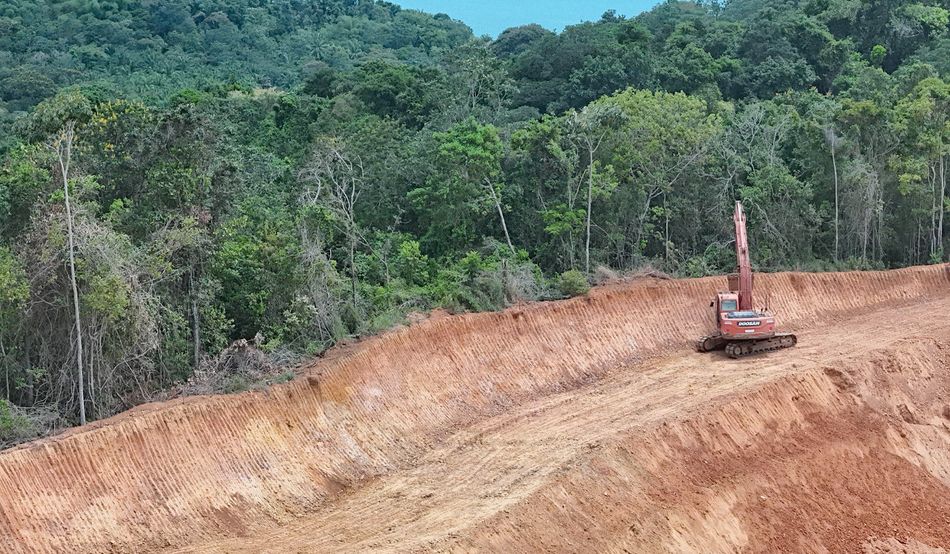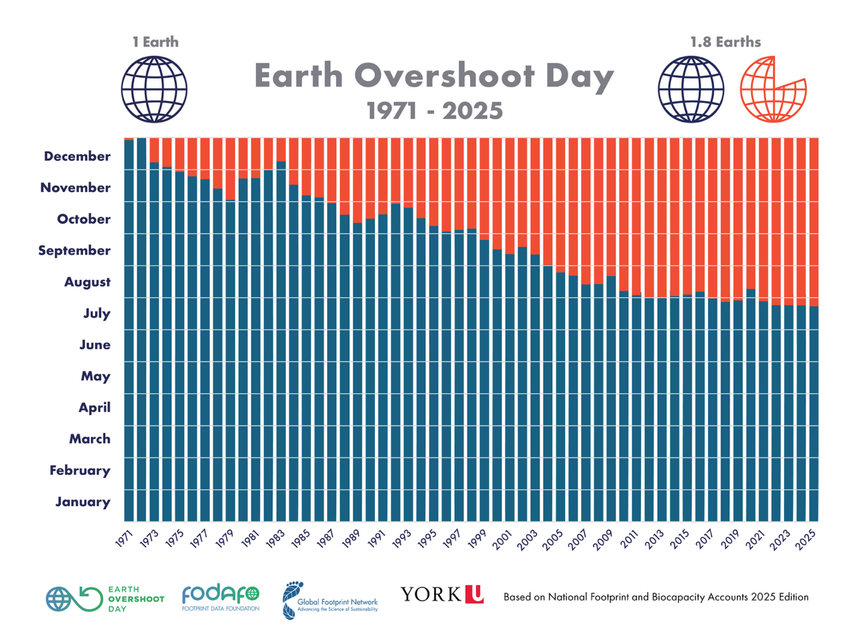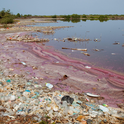The phrase “perfect is the enemy of good” (from Voltaire’s 1770 Questions sur l'Encyclopédie, in case you wondered) is a truism in climate action, if not in everything.
We are fast approaching this year’s Earth Overshoot Day, “when humanity’s demand for ecological resources and services exceeds what Earth’s ecosystems can regenerate in that year”, according to the Global Footprint Network. This year’s date is the 24th July—the earliest ever. It should be a warning for us all.
We know why this is happening. We are cutting trees down faster than forests can regenerate them, fishing to the point that stocks collapse, and grazing pastures to the point of desertification. Anyone can picture how an ecosystem can be overused in this way. The overshoot concept is an attempt to calculate the problem on a planetary level.
It’s a good measure. And though it’s not perfect, Earth Overshoot Day shows its workings. The day is calculated using UN datasets of nationally reported land use and consumption, overseen by the FoDaFo Science Advisory Committee and the Ecological Footprint Initiative at York University, and published via an open data platform.
When I spoke to Mathis Wackernagel, the charismatic founder of the Global Footprint Network, he was in Argentina, between sessions at a climate conference led by the province of Córdoba. Argentinian president Javier Milei, a chainsaw-wielding Trump chum, leads a climate-sceptic national government. But “at the provincial level, they recognise that climate change is real and something needs to be done”, says Wackernagel. “A change in resources constraints is going to happen and [they realise] they are not prepared for that.”
The concept of overshoot, he feels, “can help them shift their narrative beyond ‘the noble narrative’ to a more ‘necessity-based narrative’”. The “noble narrative” consists of emissions targets and an end to fossil fuels on moral grounds; the “necessity narrative” stresses how people may run out of food and materials. The two are not mutually exclusive: halving CO2 emissions from fossil fuels would move Earth Overshoot Day back by three months. But the noble narrative clearly doesn’t resonate with politicians and billionaires who are literally wielding chainsaws.
“I think we have a bit of a tunnel vision right now in the world around the environment, in that we focus so much on climate change mitigation and the UN processes,”, continues Wackernagel. “From my perspective that’s a strategic mistake, because we focus on a game that’s extremely difficult to win.”
National delegations at the annual UN climate conferences (COP) are focused on doing the least possible, while convincing others to do more. This is entirely the wrong way round, he argues: “Preparing yourself is actually a very good investment. Waiting for others is the most stupid thing you can do, [but] that’s what most people conclude from UN negotiations... Really the whole question is about resource security. We are entering a predictable future of resource constraints.”
Amid the brief annual flurry of “Earth Overshoot Day” articles each summer, there is usually a piece or two that tries to rubbish the science. The New Scientist posited in 2013 that: “The footprint analysis does not really measure our overuse of the planet’s resources at all. If anything, it underestimates it.” In the science journal PLOS Biology, Blomqvist et al argue that “Ecological Footprint measurements, as currently constructed, are so misleading as to preclude their use in any serious science or policy context.” While in 2019, an article in GreenBiz (now Trellis) concluded, “The methodology [is] conceptually flawed and practically unusable.” For his part, Wackernagel published his findings on biocapacity in the science journal Nature Sustainability in 2021.
I ask Robbie Andrew, senior scientist at the Oslo-based CICERO Center for International Climate Research, and a specialist in global and national carbon emissions, for the current view of Wackernagel within the climate community. “He’s not really in the climate community,” is his blunt response. As for Earth Overshoot Day itself, “I think it's catchy. I think it’s useful for communicating that we have a serious problem. [But] I think the issue is, what do you do with the information?”
Arguably, that’s been the problem ever since Arvid Högbom and Svante Arrhenius began publishing their findings on atmospheric CO2 accumulation from fossil fuels in the 1890s—as Robbie Andrew has brilliantly written. The modern science of carbon accounting and IPCC reports is far more advanced and precise. But, written in a language of “Kt of CO2e”—that’s kilotonnes of carbon dioxide equivalent, if that helps—it fails to breach the mainstream.
Narrative is everything. I write this after seeing an astonishing picture on Bluesky of a vandal scaling a fence to destroy a news station’s weather radar, an act seemingly linked to Maga-fuelled conspiracies that weather satellites are being used to cause devastating flooding, such as the recent floods in Texas. The scientifically proven case, known for decades, is that global warming is fuelling extreme weather events. But this has failed to embed in the public consciousness, while what was once a lunatic fringe is now in charge in the United States and similarly vandalising the national weather and climate agency, NOAA.
Truth matters, of course—and so the veracity of Earth Overshoot’s data is key. In his own right of reply to the New Scientist, Wackernagel said that it is based on “the most pedestrian science you can imagine. For objectivity, [we] use UN data.” The data shows that humanity’s “ecological footprint” is now 21.7bn hectares, on a planet that can only provide “biocapacity” for 12.2bn hectares. This means that our consumption is using up the equivalent of 1.8 Earths. And we only have one.
Earth Overshoot Day is an infographic, an attempt to make data beautiful. It is not perfect. But it is a good place to start.














